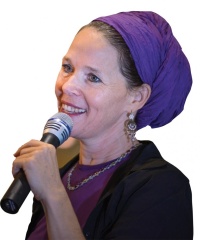Mourning and the Day After: The Road to Resilience Dr. Elliott Malamet interviews Sherri Mandell
Listen to this class
Log in to access audio
To listen to or download MP3 audio recordings, you must be logged in to your Torah in Motion account.
Already have an account?
Don't yet have an account?
Meet the speakers

Sherri Mandell
Sherri Mandell received a National Jewish Book Award in 2004 for her spiritual memoir, The Blessing of a Broken Heart, which was translated into three languages and produced as a play in Jerusalem and the U.S. She is also the author of The Road to Resilience (Toby Press, 2015), Reaching for Comfort (Ben Yehuda Press, 2020), and The Kabbalah of Writing: Mystical Practices for Inspiration and Creativity (Inner Traditions, 2024.) The Road to Resilience was published this year in Hebrew. She is the co-founder of…

Racheli Sprecher Fraenkel
Rachelle Sprecher Fraenkel teaches Talmud and Halakha at Nishmat and is the director of Matan's Hilkhata Institute (Advanced Halakha Program). She studied at Bar Ilan University , Lindenbaum, Matan and Nishmat. She was in the first graduating class of Matan's Advanced Talmud Institute and is also a graduate of Nishmat’s Yoetzet Halacha program. Ms. Fraenkel has been working as a yoetzet Halacha for over ten years. She is a co-founder of The Jerusalem unity prize and Unity Day. Mother of seven and lives with her family in Nof Ayalon.

Dr. Elliott Malamet
Dr. Malamet received his doctorate in English Literature from the University of Toronto, where he taught from 1987-1993. Dr. Malamet's work in the field of spiritual education has been featured in the leading Canadian newspapers and he has appeared on Canadian radio and television. He has run seminars on teaching Judaism to young people in the United States, Canada, England and Israel and is consulted by people worldwide on the subject of Jewish education. A sought-after speaker in Canada and overseas, Dr.…
